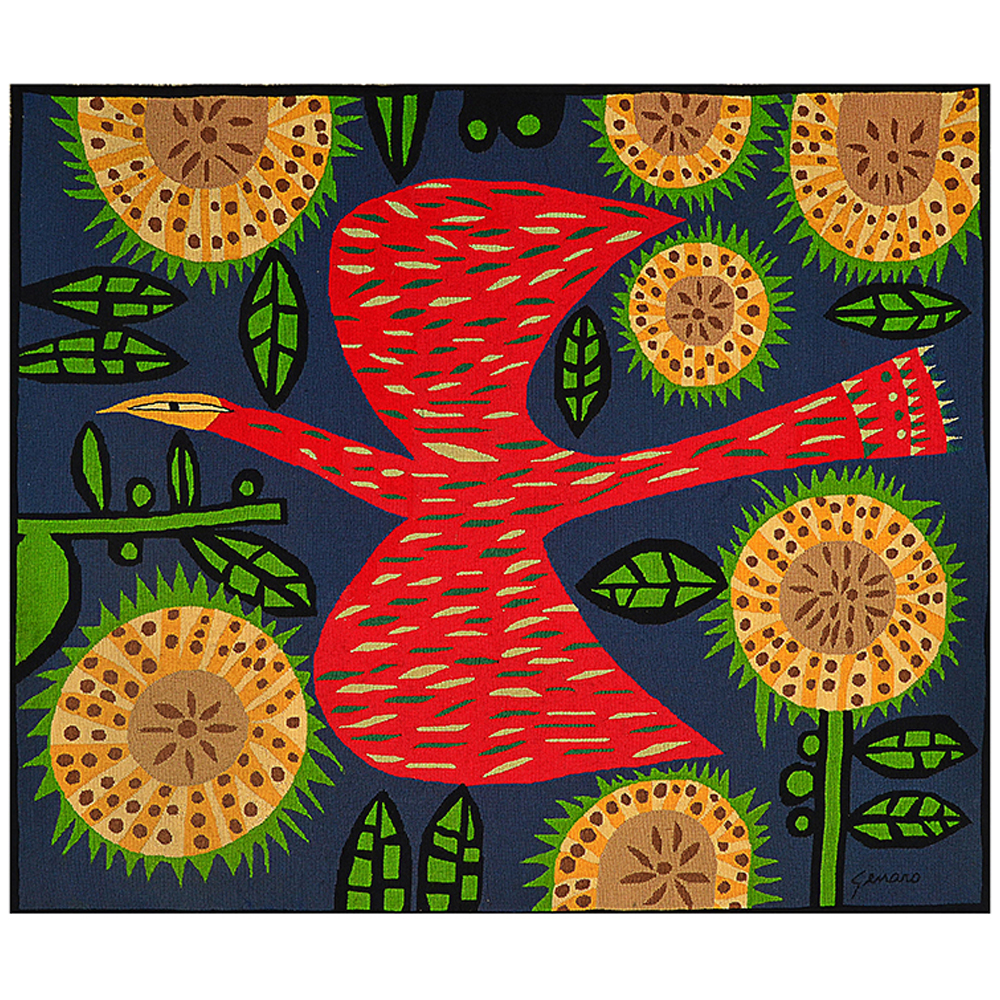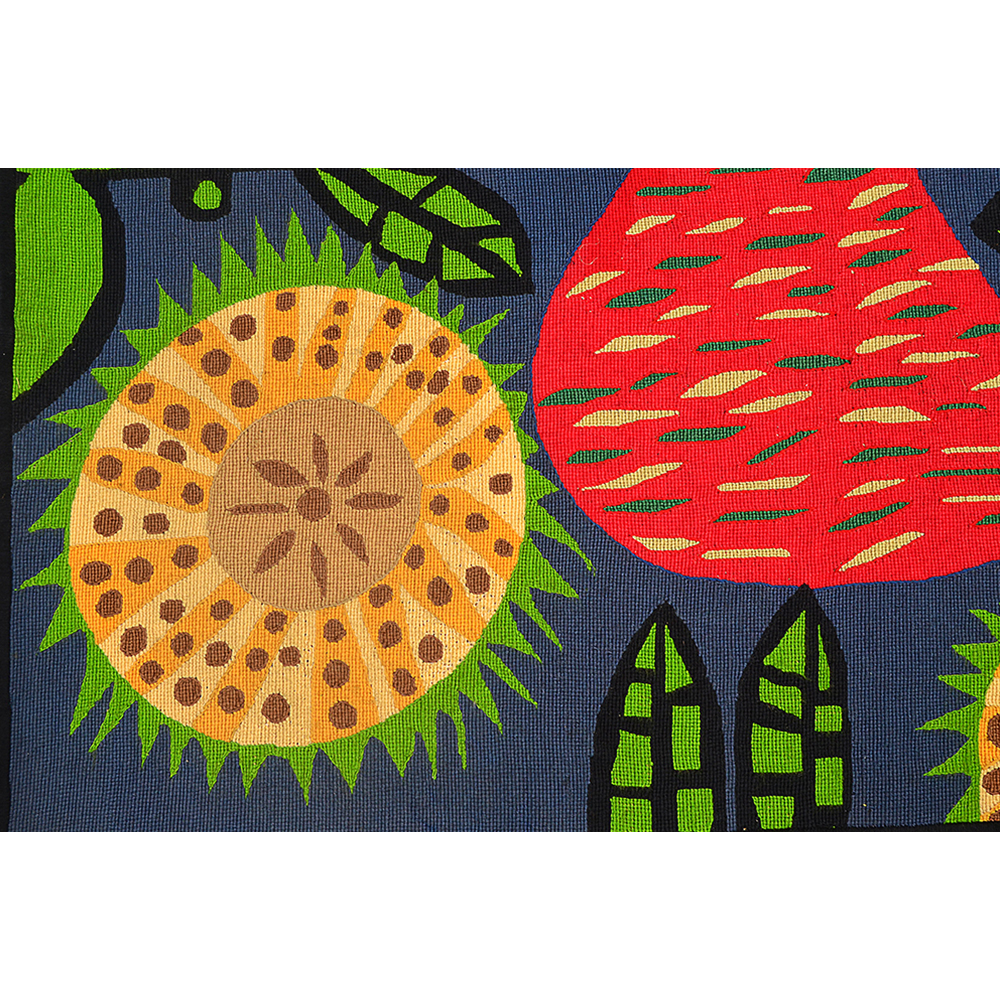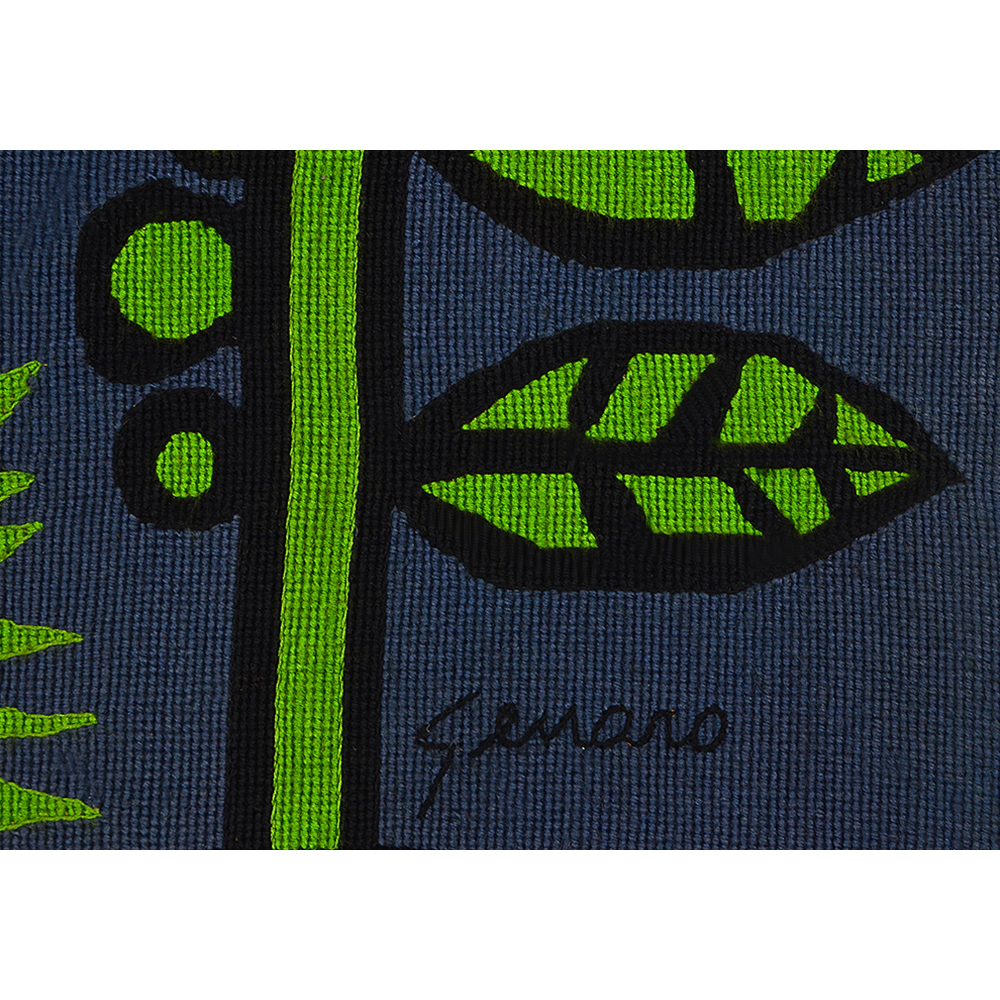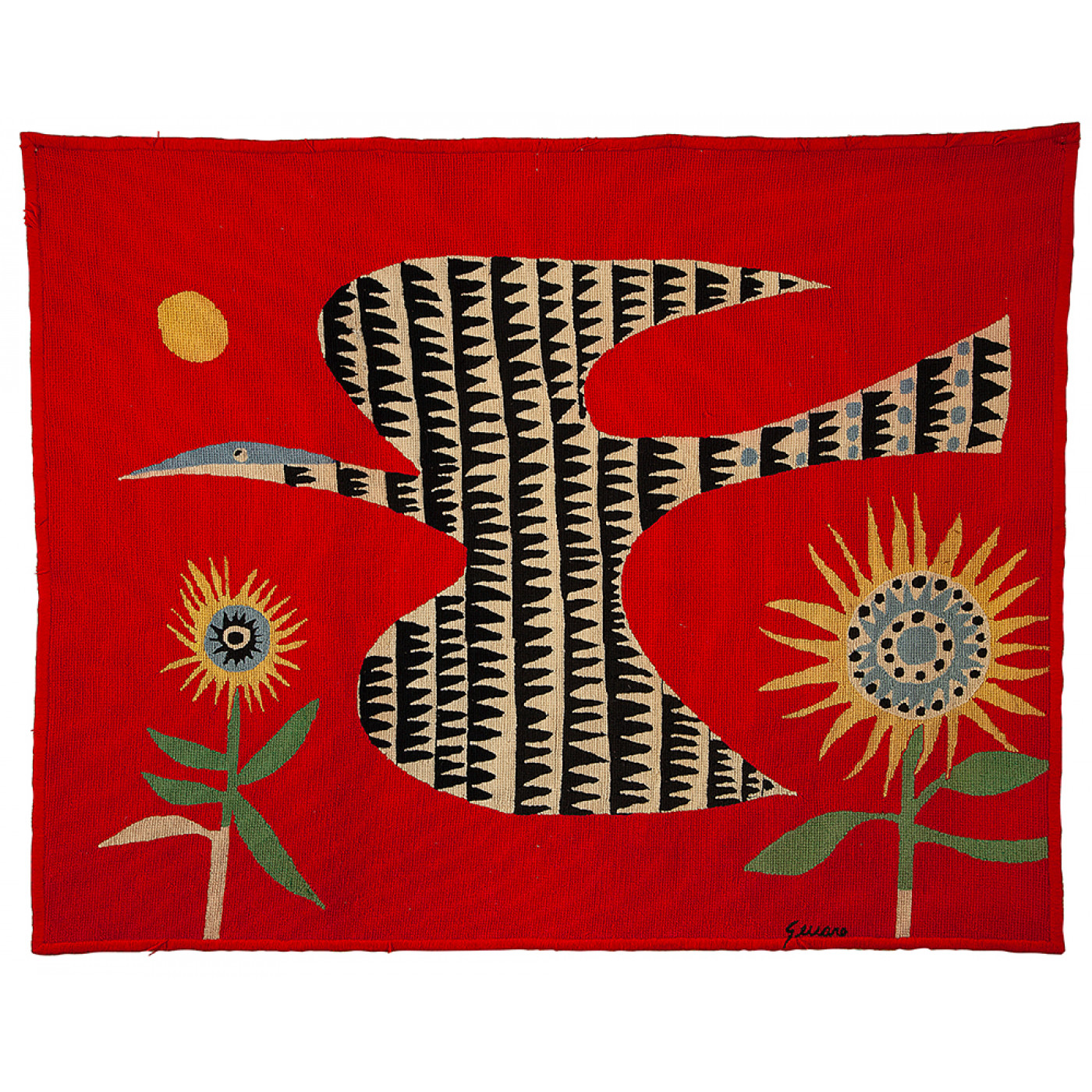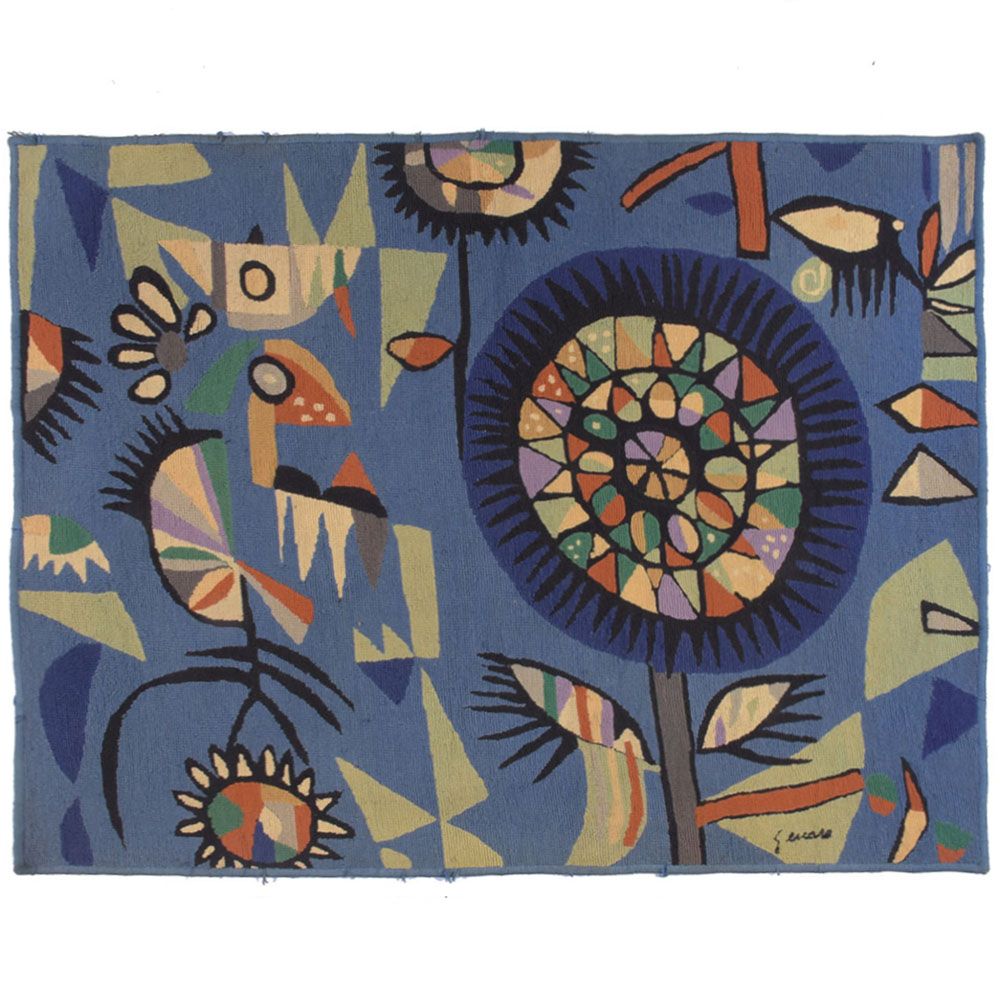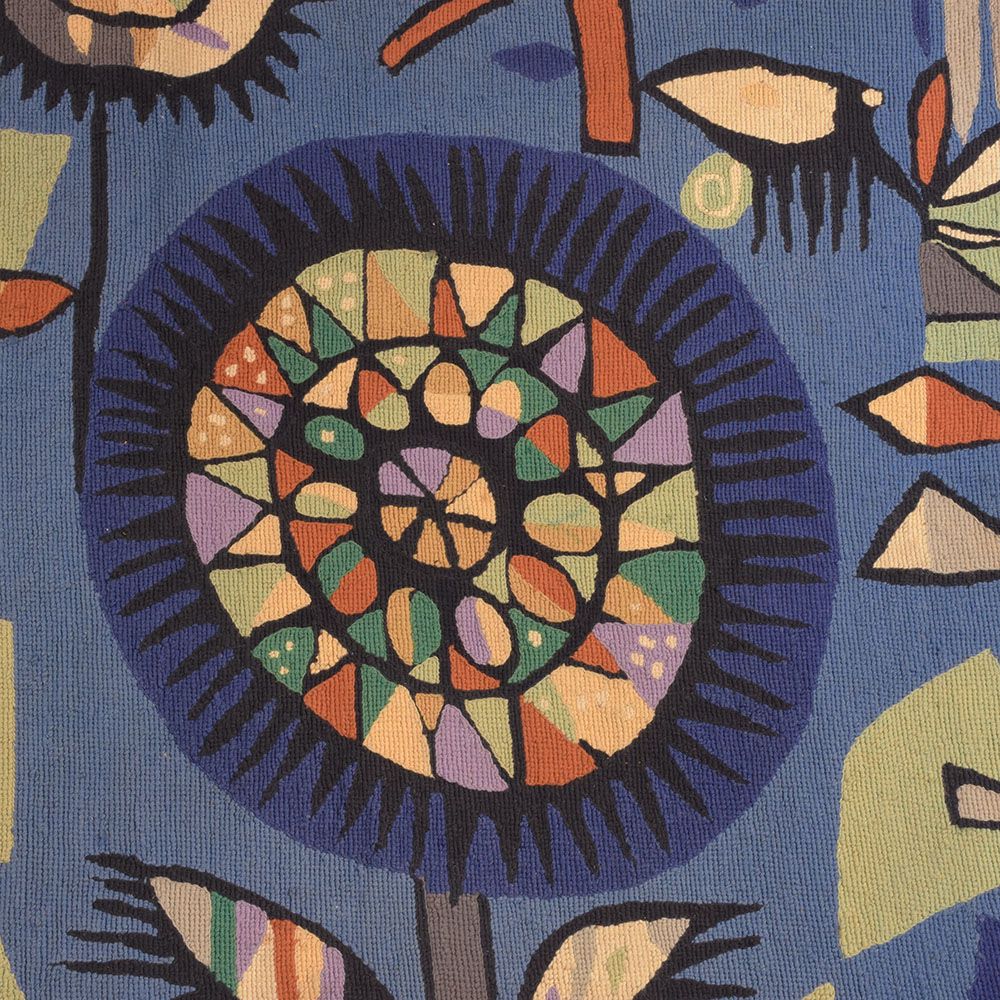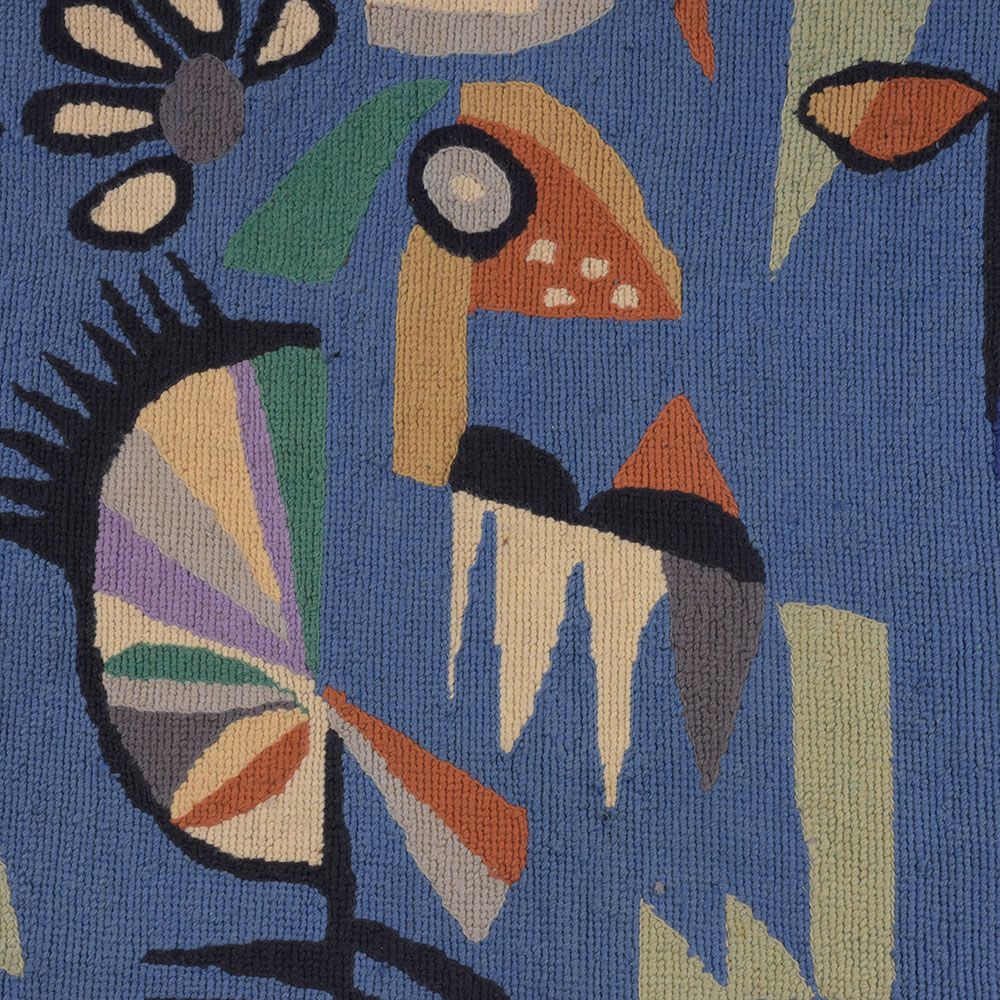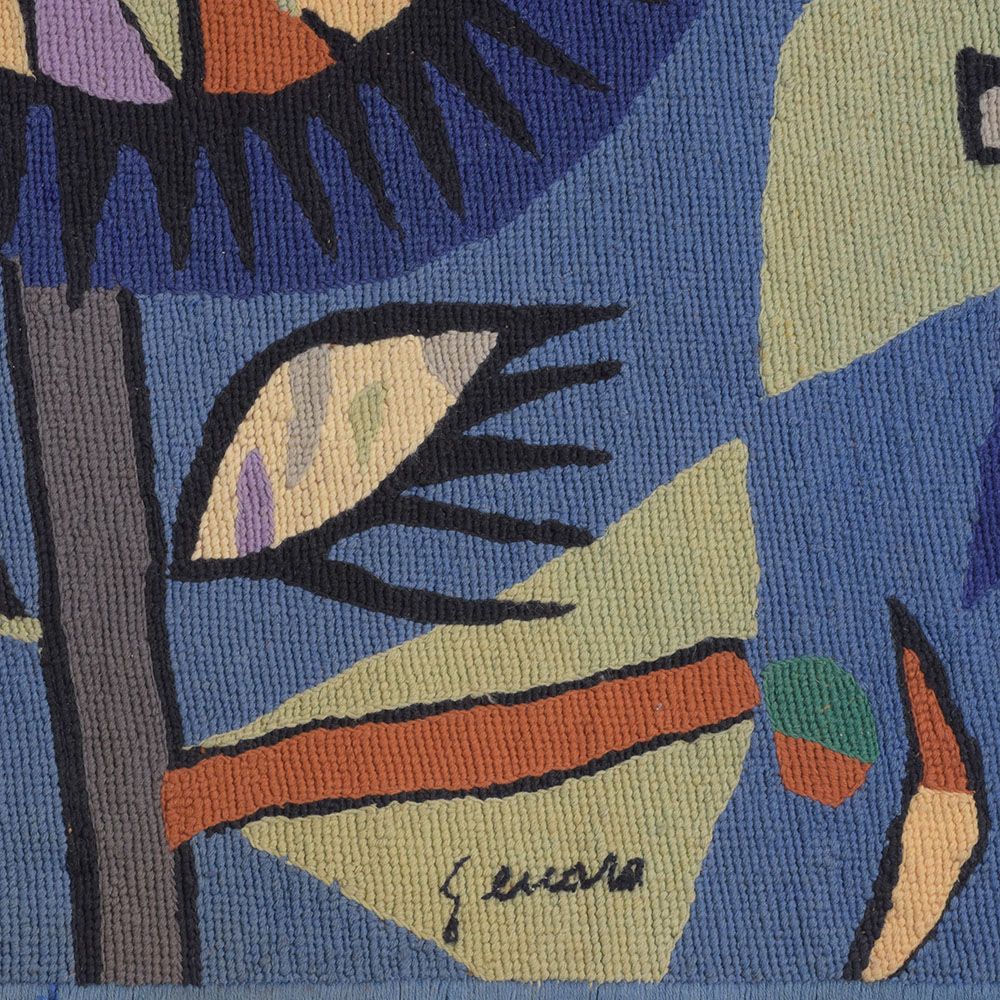Genaro Antonio Dantas de Carvalho, born on November 10, 1926, in Salvador, Brazil, was a remarkable painter and tapestry maker. While he initially pursued painting as his primary medium, he eventually discovered in tapestry the support and means of expression that truly resonated with his artistic vision. Today, he is celebrated as the pioneer of modern tapestry in Brazil.
At the age of 17, in 1944, Genaro participated in the prestigious 1st Salon of American Art at the Associação Cultural Brasil-Estados Unidos in Salvador. It was a significant moment as he, along with fellow artists from the first generation of modernists in Bahia, including Carlos Bastos and Mário Cravo Júnior, showcased their works alongside a majority of academic painters.
Genaro’s passion for art was nurtured from an early age by his father, an amateur painter. Encouraged by this familial influence, he began painting as a child. In 1944, he traveled to Rio de Janeiro to study drawing at the Sociedade Brasileira de Belas Artes under the guidance of Henrique Cavalleiro. During this time, he actively participated in the artistic renewal movement in his state, collaborating with renowned artists such as Mário Cravo Júnior, Carlos Bastos, Rubem Valentim, and Carybé.
In 1949, Genaro embarked on a journey to Paris, supported by a scholarship from the French government. There, he studied at the École nationale supérieure des beaux-arts and worked in the studio of the esteemed art theorist and Cubist painter André Lhote (1885–1962), who had also mentored renowned artists like Tarsila do Amaral, Iberê Camargo, and Fernand Léger (1881–1955). Genaro’s early paintings were strongly influenced by Cubism and the fauvism of Matisse. However, he felt a deep desire to explore new artistic avenues beyond easel painting, leading him to experiment with mosaic and stained glass.
It was during his time in Paris that Genaro discovered mural tapestry and became fascinated by this technique. His research and exploration culminated in his first tapestry work, “Tropical Plants,” created in France in 1950. With the discovery of wall tapestry, he finally found the expressive medium he had been searching for.
Returning to Brazil in 1950, Genaro made his mark by participating in the prestigious 1st São Paulo Biennial. In the same year, he received a commission in Salvador to create the monumental “Festas Regionales” mural, which measured an impressive 50 meters in length and 4 meters in height. This dry fresco adorned the restaurant of the Hotel da Bahia, now the Sheraton Hotel in Bahia, and was unveiled in 1952.
Genaro’s art, characterized by a decorative sensibility and devoid of any political agenda, prominently featured themes of trees, flowers, and birds. Although his work was not directly linked to traditional craftsmanship, it incorporated elements of popular tapestry and drew inspiration from Bahian folklore.
In addition to his mastery of tapestry, Genaro continued to explore drawing and painting throughout his career. These mediums provided him with a platform to depict a subject not typically found in his tapestries—the female figure. Often using his wife, the artist Nair de Carvalho (1933), as a model, Genaro skillfully portrayed the female form in flat compositions. These works showcased exuberant forms and were set against decorative backgrounds adorned with stylized flowers and leaves.
Genaro Antonio Dantas de Carvalho’s artistic legacy is an enduring testament to his pioneering spirit and dedication.

